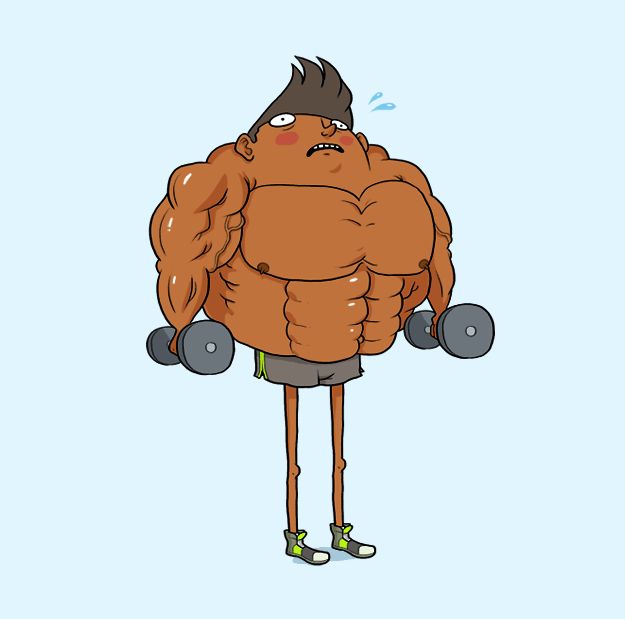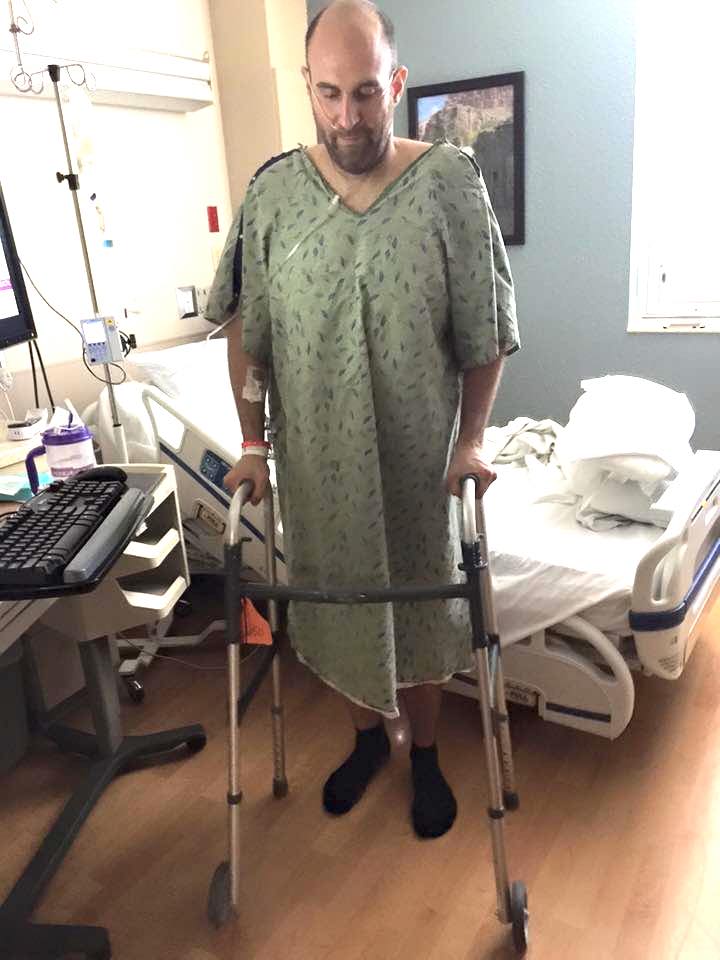Re-Thinking Upper Body Strength
2019-01-9
Sometimes when you learn more about someone, it becomes more obvious why they believe in what they do so much. For example, someone loves bodyweight training and you find out they were a former gymnast, someone loves heavy bench and you find out they loved their high school football days, you get my point. For me, being a VERY mediocre athlete didn’t give me such an advantage to be really good at anything in particular. As a young man I of course enjoyed upper body strength training better than legs, but I wasn’t exactly great at it!

It could have been me, well minus all the muscles;)
My journey through strength training has taken me to a lot of different places. Not because I was bored with something, but I was constantly trying to find anything that made a significant impact upon my fitness goals. I’ll be honest, I was kinda tricky too.
Some people may believe that based on how we strength train that we don’t care about how we look. I was a pretty heavy kid and struggled with being an awkward, heavy kid for awhile. Being a heavy kid never really leaves you and looking good has ALWAYS been something I strived for in my training. Of course when I was younger the upper body strength like in the pecs and biceps were the MOST important. After some time I would learn there was more to training than pecs and biceps.
While looks were on my mind, I had also suffered a very bad low back injury. Having my athletic career in such jeopardy being young left me wanting to prove everyone wrong. Learning about core training and not everything is about upper body strength, were two lessons I learned early. My back injuries may have limited my physical potential, but they accelerated my thought process in training.

Spine issues from my youth would be a battle for my whole life.
With wanting to perform well that meant I also cared about how my strength carried over outside of the gym. Playing basketball there weren’t too many guys strength training at the time. Not being the fastest or being able to jump the highest, I saw the immense value of strength training to make me a competitive athlete even though I had average ability. I won’t lie, I did a lot of upper body strength work because I still thought running and jumping would cover my legs, but as I continued to learn about the body that philosophy would change for me.
In fact, my first continuing education seminar for fitness I attended when I was 16. Upon the recommendation of my mentor at the time I went to a National Academy of Sports Medicine program. I would love to tell you it was awesome, but all I remember is being SOOOO LOST in the content that I only learned one important thing….I wanted to know everything about the body and training!
Sharing this story with you isn’t about rehashing my youth, but hopefully helping you see that I’ve always been about finding “the better way”. Being married to a tool, a method, or anything of the such wasn’t something I have ever been. Even though others saw me as the “kettlebell guy”, the “weightlifting guy”, etc. as I tried many different methods to find out what worked best for me and my clients, those successes and failures taught me so much about how to get people extraordinary results1
Since Jessica and I have been writing so much about the shoulders this week, I wanted to keep the theme for today in our upper body strength training. Everyone wants better looking arms, shoulders, upper back, and us guys want that “The Rock” shirt busting physique right?;)

We want to look better but we also don’t want to hurt. Oh, most of us can’t live in the gym either so we are balancing a real life with what we do in the gym. Being as efficient with our time in the gym is how I came up with these strategies to help people re-think how they approach their upper body strength training. Here are some simple guidelines to achieving greater success!
Don’t Train The Upper Body Alone
Now, there is some room to debate this one. If you can train at least 4 days a week you COULD train upper body strength alone. However, even then, I think most people are better served with their time always doing full body lifts.
For one, it allows you to avoid overtraining, doing full body gives us the chance to actually train upper body strength more frequently, and to be honest, it is really hard to classify some exercises as ONLY upper or lower body.

The more you understand about the body, the less you even WANT to isolate muscles.
Circuits are awesome ways to maximize time in the gym, especially total body circuits. If we focus on upper body strength we have tons of options if we go back to the movement patterns of human movement. Sure, at first glance doing pushing and pulling doesn’t seem like it helps a lot, but let’s look at how much this type of upper body strength training allows for….
-Pushing/pulling can happen horizontally or vertically. That means one day can focus on going one direction while the next goes the opposite. This ensures better training balance and not overtraining and improper balance in the body.
https://www.instagram.com/p/BgEeKMAhoDU/
DVRT Master, Sean Lettero, shows that horizontal pushing doesn’t have to be just bench press or boring old same push-ups.
-Pushing/pulling can be done with one hand, two hands, alternating hands. This allows us to challenge the full body in our upper body strength in different ways including tons of core work at the same time! A big part of keeping a healthy body is integrating the parts that work together. As we have written a lot about, the shoulders work BIG time with the core and hips.
-Pushing/pulling can be done from many different body positions. Simply by changing the position we are pushing or pulling from can change the intensity and focus of our upper body strength training.
DVRT UK Master, Greg Perlaki, shows some simple ways we manipulate our body positions to make our upper body strength training just a bit more challenging.
-Pushing/pulling can work in different directions. This is probably more new to most people when it comes to their upper body strength training. Spine expert, Dr. Stuart McGill, has actually shown when we change our body position or direction of movement we actually shift which muscles are being emphasized. So, simply doing a body row on a suspension trainer one day, an Ultimate Sandbag bent row another day, and a standing band row another day would actually change the muscles being used even though they seem like they are the same exercise.
DVRT Master, Cory Cripe, shows how we can use these principles to make the same exercise with the same tool feel like a very different upper body strength training exercise.
Once you open your mind to all the different ways the body can perform you start to see training in a very unique way. One that isn’t just different, but actually better. DVRT Master, Cory Cripe, puts it so well as he constructs a great workout based on these principles that challenge the whole body in such powerful ways. You might not think these are strong upper body strength moves, but the more you understand the body, the more you “see it”.
This is what our new Loaded Integrated Functional Training certification (L.I.F.T.) is all about. Find out how we are helping people see the potential functional training has in making your training not just more enjoyable, but so much more effective HERE!
“I’m not surprised how many out there still don’t understand the intelligence of the DVRT system. Honestly, show me this stuff back when I was pumping iron and I would have blown it off thinking there is nothing wrong with my bodybuilding exercises.
But why did the traditional gym exercises leave me feeling not so strong outside of the gym? Even though I could bench, squat, deadlift so much weight (and don’t get me started on how much I loaded the biceps curl bar) I still suffered from low back pain and even experienced injuries lifting my small children!
I don’t know how it happened, but I found myself humble enough to begin rethinking my approach to fitness personally and for my clients and like the old adage goes: when the student is ready, the teacher will appear.”
© 2025 Ultimate Sandbag Training. Site by Jennifer Web Design.







